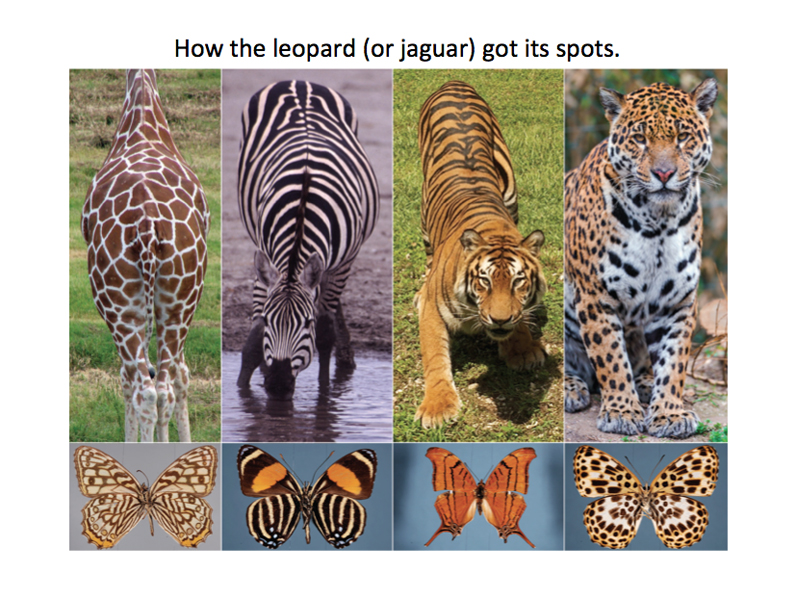
|
| As with cheetahs, the jaguar (far right) has a spot pattern that seems symmetric but is actually asymmetric at a local level. That is, the spots on either side of the midline are not exactly the same. Comparable deviations can be found in striped animals such as tigers and zebras, and to an even more obvious extent in reticulated giraffes. Curiously, no such asymmetries occur in butterflies that have similar patterns. Why not? Evo-devo offers an answer: mammals and butterflies make similar patterns by using different molecular-genetic devices. Mammals use an "activator-inhibitor" (AI) system to create spots or stripes in a relatively random array. In contrast, butterflies use an x-y coordinate system of chemical gradients, where the location of each spot or stripe is specified precisely. The AI system has been analyzed experimentally in fish. Mammal photos are from Heather Bradley Photography/foter.com (giraffe), John Storr/Wikimedia Commons (zebra), ucumari/foter.com (tiger), Tambako/foter.com (jaguar). Butterfly photos are from www.lepdata.org (©2012 by W. H. Piel, L. F. Gall, J. O. Oliver, A. Monteiro, and the Yale Peabody Museum). |
|
leopard | cheetah compared with butterfly | anglefish | zebra | mouse cloud leopard | giraffe | ant | beetle | treehopper stalk-eyed fly | ladybird | snake | The Interactive Fly resides on the web server of the Society for Developmental Biology. |

